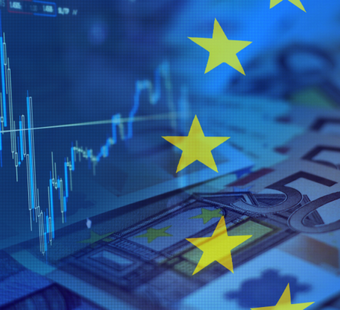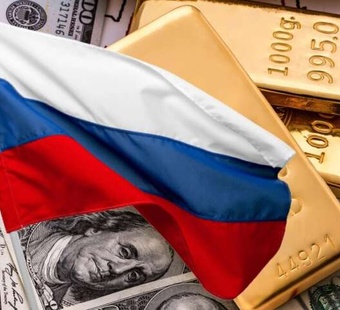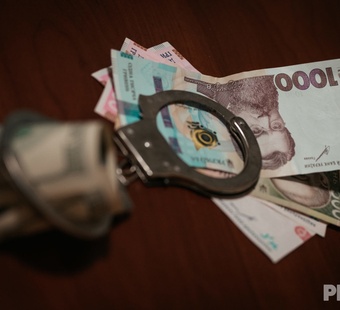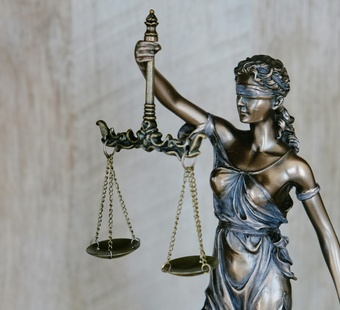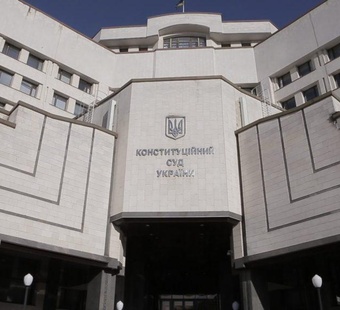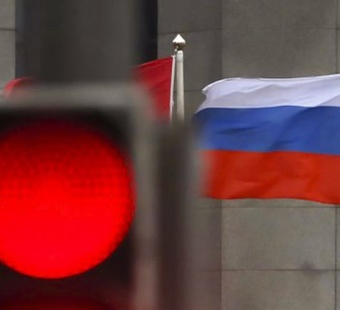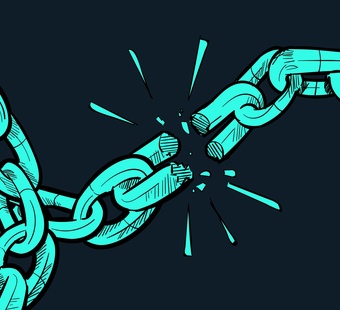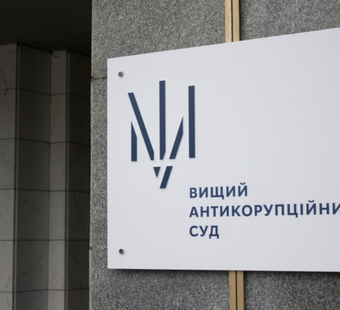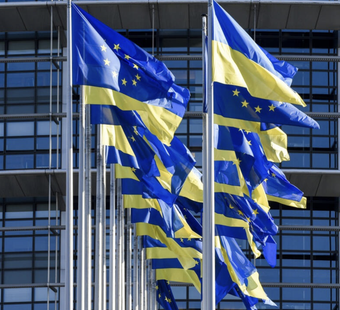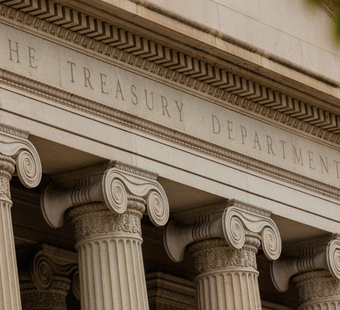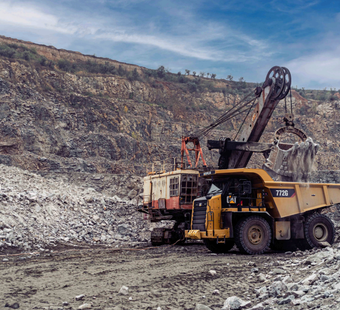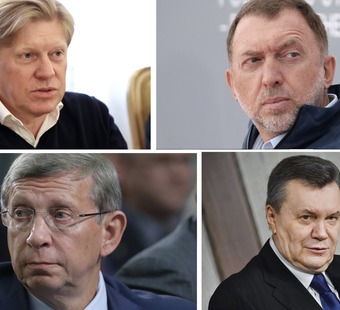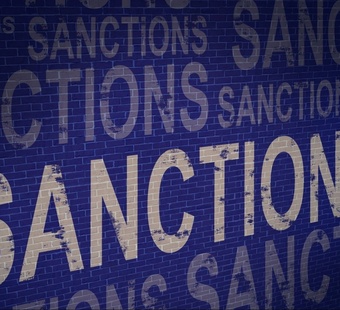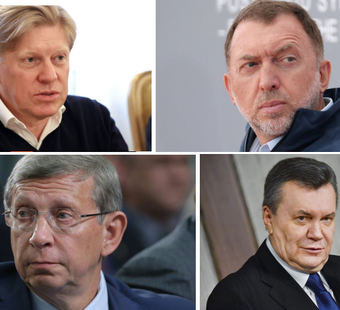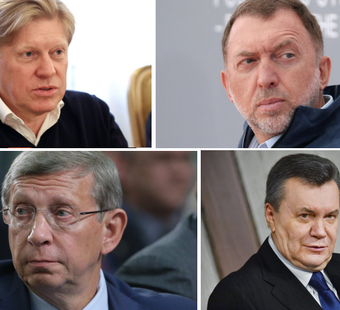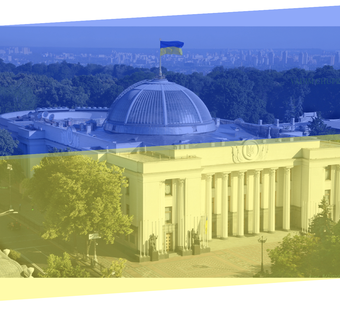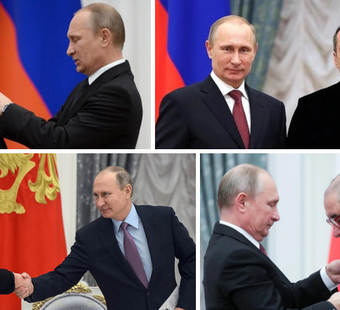>
Аналітики>
Forfeiture of assets belonging to persons responsible for Russia’s aggression against UkraineForfeiture of assets belonging to persons responsible for Russia’s aggression against Ukraine
*This analytics is published in English only

This research was issued by the analytical center "Institute of Legislative Ideas" within the frameworks of the "Arrest and Confiscation of Russian Assets" project with the support of the EU Anti-Corruption Initiative (EUACI), the Initiative for the Development of Analytical Centers in Ukraine, which is carried out by the International Renaissance Foundation in partnership with the Open Society Initiative for of Europe (OSIFE) with the financial support of the Embassy of Sweden in Ukraine. The opinions and positions expressed in this research are the position of the authors and do not necessarily reflect the position of EUACI, the Embassy of Sweden in Ukraine, the International Renaissance Foundation and the Open Society Initiative for Europe (OSIFE).
Introduction


It is currently the ninth month of Russia’s full-scale invasion on the territory of Ukraine. The world is actively looking for mechanisms that will force Russia to end the war. For this purpose, Ukraine and democratic countries around the world are developing various tools to influence the aggressor state and individuals responsible for the war. One of them is sanctions. They have already been introduced and are only being strengthened by the EU, the USA, the UK, Australia, Japan and other countries. However, as of today, we can say that economic restrictions, particularly the ban on exports, fixed prices for energy resources, etc., in their current scope are insufficient to stop the war.
It is important to influence the individuals who are personally responsible for political decisions, conducting and supporting the aggressive war against Ukraine.
One tool of such influence is personal sanctions. However, we can observe that temporary bans on entry and worldwide blocking of the billion-dollar assets of Russia's top political leadership and its backers (about 100 billion dollars) are not stopping them, either. Therefore, the next step would be the forfeiture of such individuals’ assets. Some countries have already implemented such mechanisms, while others are still investigating how to implement them.
In this document, we:
- disclose the legal nature of forfeiture of private assets of individuals responsible for the war in Ukraine and their accomplices as a form of sanctions;
- justify the necessity of this measure;
- describe the current situation with the implementation of this tool and analyze the first case of forfeiture of the assets belonging to a Russian oligarch — a weapons manufacturer;
- provide practical recommendations on improving the practice of forfeiture in view of the principle of legitimacy and protection of property rights.
The research can be useful to everyone who is interested in forfeiture processes, as well as policymakers of Ukraine's partner countries, who are currently looking for a way to implement this mechanism.
Section І

THE WAR IN UKRAINE AND SANCTIONS

The full-scale invasion in February 2022 and the consequences of the war for Ukraine
The full-scale war of Russia against Ukraine has been underway for over 8 months now. Since February 24, 2022, about 200,000 Russian soldiers have groundlessly invaded the territory of Ukraine from the territory of Russia and Belarus, trying to occupy the country from Kyiv to Kherson.
It primarily affected Ukrainian citizens and other people located on the territory of Ukraine at the time. As of August 17, 2022, over 6.6 million refugees were registered in European countries, and as of June 23 IOM report found that over 6 million remain internally displaced. On June 29, 2022 the Office of the United Nations High Commissioner for Human Rights (OHCHR) recorded more than 10,000 victims among the country's civilian population, of which 4,731 died. At the same time, taking into account the active hostilities and the actual occupation of part of the territory of Ukraine (the area of which exceeds the territory of some European countries), the real number of victims of the war is much greater. For instance, in Mariupol alone, we are likely to discover a count of victims reaching tens of thousands.
In addition, the Russian military commit massive war crimes against the civilian population. The Prosecutor General's Office has recorded 36,281 war crimes and crimes of aggression as of September 26, 2022. Atrocities in Bucha, Irpin and Hostomel, executions of citizens, rape, torture — this is only a short list of what the Russians have committed in the territory of Ukraine. The number of crimes is growing every day.
Thousands of missiles were fired at infrastructural (airports, railway stations, bridges), military and industrial facilities, as well as at residential areas (houses, apartments, entire cities were also subjected to massive shelling from all types of artillery). Ukraine is maintaining continual calculations of economic losses in this war already.
As of September 30, 2022, Ukraine’s direct economic losses, according to expert calculations, reached USD 114.5 billion. In total, according to the Government, restoration of the economy and infrastructure will take about USD 750 billion.
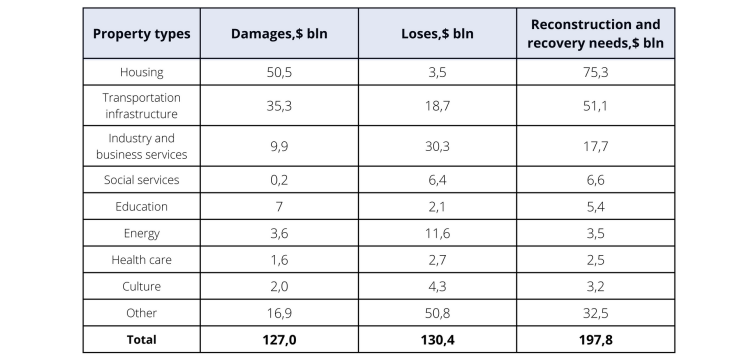
Damages, loses and reconstruction and recovery needs by sector breakdown as of September 30, 2022 Sourse: KSE
Russia must compensate for all the material losses caused as a result of its unjustified and brutal war against Ukraine, in particular at the expense of the private individuals responsible for the aggression and their accomplices.
Sanctions before the full-scale invasion. Were they enough?
Sanctions have become an effective and legitimate tool of foreign policy. They can be aimed at solving both local and global problems. Among other things, sanctions make it possible to avoid the use of military force, can weaken the military potential of a certain country and contribute to compliance with the rules of international law of a country that has violated them*.
Practice shows that the legitimacy of sanctions began to be associated not only with international law, but also with the national interests and democratic values of the countries that initiate the sanctions.
The purpose of sanctions may be different in each specific case and depends on the context and objective situation in which they are imposed.
The EU defines the main objectives of imposing sanctions as follows:
- safeguarding EU's values, fundamental interests, and security;
- preserving peace;
- consolidating and supporting democracy, the rule of law, human rights and the principles of international law;
- preventing conflicts and strengthening international security.
In Ukraine, sanctions are imposed with the following objectives:
- protection of national interests, national security, sovereignty and territorial integrity of Ukraine;
- countering terrorist activities;
- preventing violations, restoring violated rights, freedoms and legitimate interests of citizens of Ukraine, society and the state.
In 2014, a number of countries imposed then-unprecedented sanctions on Russia and its citizens in connection with the annexation of Crimea and the beginning of armed aggression in the east of Ukraine. These sanctions were supposed to help avoid military escalation and achieve the desired political results peacefully, weakening Russia's military potential.
In particular, the following types of restrictions were applied:
- freezing (blocking) assets;
- restrictions on crossing the border;
- ban on investments;
- import restrictions;
- embargo,
- etc.
Sanctions against Russia since 2014 and their effect
The purpose of EU sanctions in 2014 was increasing the costs and consequences for Russia of its actions to undermine Ukraine's territorial integrity, sovereignty, and independence and promoting a peaceful settlement of the crisis.
After 2014 and until 2022, the sanctions pressure of the USA, the EU, other states and international organizations on Russia and its military machine only increased. However, they obviously did little to achieve the envisioned objectives.
Sanctions introduced in 2014 led to a 10% drop in Russia's aggregate GDP compared to 2013 (according to the World Bank). However, since 2015, Russia's total GDP has been gradually increasing. The Russians themselves, referring to the research of the International Monetary Fund, noted that the growth of the national economy (by 2.5% during 2014-2018) significantly exceeded the annual effect of sanctions (0.2%), and the amount of accumulated gold and foreign exchange reserves and unemployment rates significantly have improved as of 2019 compared to 2015.
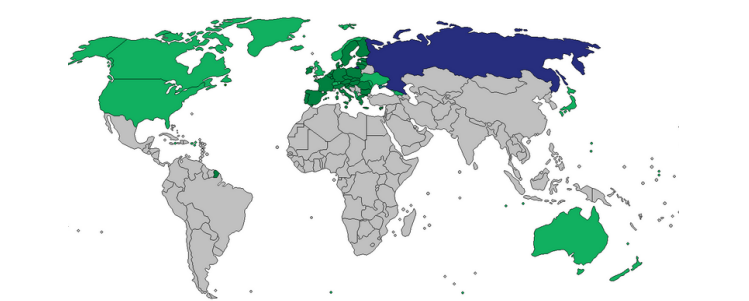
Countries that imposed sanctions against Russia in 2014
As a result, none of the sanctions imposed on Russia by the global community during 8 years achieved the desired result and prevented Russia from starting a full-scale war, the dire consequences of which we are currently witnessing.
Since the main criterion for the effectiveness of sanctions is the achievement of the set goals, it can be argued that the sanctions imposed on Russia were ineffective and failed to prevent it from starting the biggest war since the World War II.
In this connection, the question arises: should the current goals of the sanctions and the methods of achieving them remain, or are new, more decisive measures needed to deter Russia from further harsh actions in the war against Ukraine and to compensate for the damages caused by it?
The sanctions war declared by the whole world against Russia, as a countermeasure to the real war that Russia has unleashed in Ukraine, must become tougher.
An effective mechanism for this can be the forfeiture of frozen private assets of Russia’s political leadership and persons who contribute to the aggression. This forfeiture may be implemented by imposing personal sanctions on representative of Russia’s political regime, its backers, as well as those who publicly approve of the war and support it.
Frozen private Russian assets
According to the NACP estimate, Russian assets in the amount of one trillion US dollars have already been frozen worldwide. Most of them are sovereign assets of the Russian Central Bank. Currently, the total value of such assets is estimated at 300 billion US dollars. However, the amount of private assets frozen around the world, which may later be confiscated, is also significant and constantly growing. In a while, the share of blocked private assets may reach 30% or even 50% of Russia’s Central Bank reserves.
Thanks to active communication of Ukrainian government officials and strong political will, countries are increasingly freezing private assets. For example, Belgium has already blocked USD 50.5 billion of private Russian assets, the UK — USD 20 billion, Switzerland — USD 6.8 billion, Germany — USD 4.67 billion, Poland — USD 2.7 billion, Italy — USD 1.7 billion, France — USD 1.2 billion. Considering other countries which have frozen assets in lower amounts, the total amount of frozen private Russian assets worldwide reaches about USD 100 billion.
In addition, the hunt for the private assets of the Russians responsible for the war continues for their further blocking and possible forfeiture. It is on the agenda of both official authorized agencies and specially established national and international task forces and asset tracing platforms. Investigative journalists have come to play quite a significant role in this process.
Therefore, thanks to the active work of these entities, the effective cooperation of Ukraine with its partners and the political will of different countries, the total amount of frozen private assets of the aggressors and their accomplices will only grow in the future.
In this document, we will analyze the nature of forfeiture of private assets without a court verdict, the state of implementation of this measure in the world, and the Ukrainian model of forfeiture of the aggressor’s private assets, as well as point out the standards that must be followed in order for this measure to be recognized as legitimate. In addition, the research may be useful for policy-makers of Ukraine’s partner countries who are looking for a way to implement similar mechanisms in their legislation.
Section ІІ

Forfeiture of private assets of individuals responsible for the aggression: idea and implementation

The nature of such forfeiture
Asset forfeiture, is the most significant legal restriction compared to other types of sanctions, but it is necessary in the current conditions.
At the same time, forfeiture of private assets has a special nature. In addition to achieving the goal of directing Russian funds to the reconstruction of Ukraine, this measure is a form of personal responsibility that can change the behavior of a specific person.
It is extremely problematic to achieve the same result by applying other economic measures. This vividly illustrates the inability of all other types of sanctions and restrictions to effect real influence on the fortunes of individuals who make political decisions regarding the aggression or enable it.
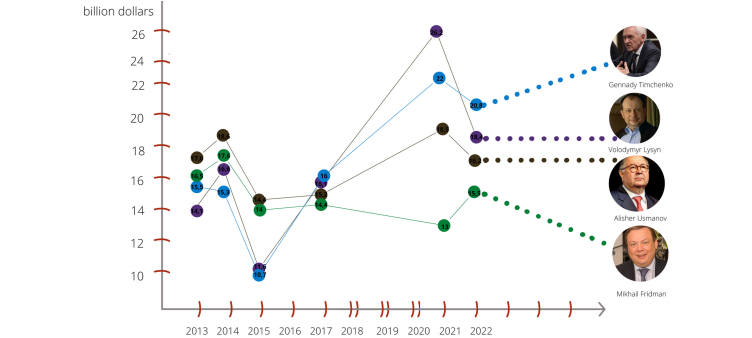
It is much more difficult to assess the fortunes of Russian politicians who made the decision to invade Ukraine. Their assets are hidden in offshore companies or are at the disposal of oligarchs, relatives or other people from their inner circle. For example, Putin’s nephew Mikhail Shelomov owns assets amounting to USD 1.25 billion. However, his wealth is called “nominal.” Meanwhile, the name of cellist Sergey Roldugin became famous not because of his professional career, but because of the discovery of the Panama Papers, his friendship with Putin and cooperation with offshore companies. Valentina Matviyenko, the head of the upper chamber of the Russian parliament, has a villa and a business in Italy, formally owned by her son.
Therefore, it can be argued that the sanctions imposed earlier both on the Russian Federation and on its individual representatives did not prevent individuals responsible for the aggression from further enrichment. In fact, they have not incurred any personal liability; moreover, their fortunes are growing, and their assets are replenished with luxury houses and yachts. This requires the search and application of new means of influence.
In our opinion, whoever deliberately started and supports the war fully understood the negative consequences for the state, in particular for its economy and population, it would entail. However, freezing of sovereign assets, oil or energy embargoes, and other sanctions are unable to effect crucial influence on the wealth and financial well-being of such individuals and, as a result, change their behavior to stop the war and its support. It is the individual responsibility of the aggressors and its inevitability that can become the personal risk that can really influence their behavior and prevent further wars in the world.
However, the mechanisms of enacting such responsibility are highly limited. The political leadership of any country, including Russia, enjoys functional immunity from criminal prosecution and responsibility at the national level in accordance with international customary law, enshrined in the practice of the UN International Court of Justice and other international documents. An exception is established only in relation to the prosecution of a person for international crimes by the decision of an international tribunal or in cases of a state's refusal of the immunity of its leaders, of which the other state must be officially notified. However, this scenario appears unrealistic for Russia. Therefore, we can come to a general conclusion that bringing the leadership of another country to criminal liability (including the use of punishment in the form of confiscation of their property) at the decision of a national court will not be considered legitimate pursuant to international law.
World practice shows that such responsibility usually “caught up” with the persons responsible for aggression and their accomplices in international tribunals. Despite the fact that the search for a suitable model of the future tribunal, which should ensure that the political leadership of the Russian Federation is held accountable for the committed crime of aggression, is currently being sought, there is no doubt that it will eventually come to that. However, the mechanisms that exist today and the precedents established by previous tribunals do not allow for quick and effective results. Therefore, we cannot currently speak of inevitable punishment.
The Nuremberg Trials, on which modern international tribunals are based, took place after the aggressor country came under the control of allied states, admitted its guilt, signed an act of surrender and extradited all criminals. This course of events can hardly be possible when it comes to Russia. Additionally, it is worth noting that the largest German industrialists, such as Alfred Krupp, were accused within the socalled “little Nuremberg trials" of participation in planning and waging an aggressive war and of other crimes, and sentenced to imprisonment and confiscation of property. However, later most of them were released early, and the property was returned in full.
The work of other international tribunals also lasted for a very long time and did not result in any precedents in terms of bringing the convicts to property responsibility. For example, the International Criminal Tribunal for the Former Yugoslavia lasted 24 years (1993-2017). Charges were brought against 161 people, 90 of them were convicted, but the Statute of the tribunal did not provide for any property responsibility. The International Tribunal for Rwanda operated for 21 years (1994-2015). Charges were brought against 93 people, 62 of them were convicted, and the Statute of the tribunal did not provide for any additional liability in the form of confiscation of property or fines.
The Rome Statute of the International Criminal Court (ICC), on the other hand, provides for fines and forfeiture of property as punishment for the crime committed (Article 77 of the Statute) and, additionally, reparation to victims under a separate resolution of the ICC (Article 75 of the Statute). However, in terms of the investigation of crimes committed by the highest political leadership of Russia, it makes no sense to talk about possible prosecution. The ICC does not have the jurisdiction to investigate the crime of aggression committed by citizens of states that are not parties to the Rome Statute (which includes Russia), and the only real perspectives regarding bringing the leadership of Russia to the liability will be opening investigation under this particular crime. In addition, the actions of individuals who contributed to the aggressive war through financing, in any case, will be difficult to tie in with the characteristics of aggression, as well as other crimes under the jurisdiction of the ICC (war crimes, crimes against humanity, genocide).
Moreover, the mechanisms of previous international tribunals and the ICC did not establish the possibility of conducting proceedings in absentia, i.e., in the absence of the suspect, which actually makes it impossible to prosecute the persons responsible for the aggression, in case it is impossible to bring them to court physically.
Further, none of the existing mechanisms allow prosecution of persons who have already passed away, which makes it impossible to apply fines/confiscation of the property of the convicted person to compensate the victims even if the perpetrators did not live to see the conviction. Considering the age of the potential defendants (for example, Putin is now 70, Defense Minister Shoigu is 67, Foreign Minister Lavrov is 72, and oligarch Yevtushenkov who sponsors the Russian military machine is 73), there is a high probability that many of them will not live to be sentenced by the tribunal, because the average period of investigation and trial by the ICC and previous tribunals is about 10-15 years.
Therefore, since punishment for the crime of aggression or its active support is quite problematic to achieve in the ICC or other potential international tribunals, the possibility of prosecuting such persons using this method seems unlikely in the near future. The situation is similar with charges in criminal proceedings in specific countries and forfeiture of assets as a punishment for a crime, because currently, no country, except Russia, will be able to “reach” these persons, and there is no reason to hope for a quick change of Putin's political regime.
Civil forfeiture, or forfeiture without a guilty verdict in a criminal proceeding, may become not only an effective measure capable of influencing an individual’s behavior, but also a working reparation mechanism and a true measure for bringing such individuals to a personal responsibility.
Civil forfeiture is actively used by various countries and is fully consistent with the current global trends of increasingly harsh measures of forfeiture beyond the criminal procedure. This is due to the fact that in numerous instances, it is extremely difficult to reach the person. The reasons may vary: non-extradition of the criminal by their country, “immunity" from criminal prosecution received from the authorities, political immunities, etc*. In those cases, the forfeiture of their assets through the use of civil rather than criminal procedures is fully justified.
Such approaches are increasingly supported and implemented in the legislation of democratic states. Some European countries have allowed the forfeiture of property without a guilty verdict (in a civil process with the burden of proof on the defendant) if its owner cannot prove the legal origin of such property. The ECtHR recognized these measures as being consistent with the ECHR**.
Based on a similar principle, it could be possible to forfeit private assets of persons responsible for aggression and their accomplices, using a simplified procedure within civil proceedings.
Taking into account the exceptional circumstances of the Russian invasion and the special nature and purpose of the forfeiture of private assets, the use of this measure of influence beyond criminal proceedings should be recognized as adequate interference with the right to private property, compatible with the provisions of Protocol No. 1 to the ECHR. Therefore, countries that have the political will to use this forfeiture can follow this path, because it is unlikely that Russia will prosecute those responsible for starting the war or supporting it, or will allow other countries to do it within the procedure of criminal prosecution.
The decisive grounds of legality and indicator of the viability of this measure will be its ability to comply with the rules of adequate interference with the right to private property and ensure all the necessary procedural guarantees, which will be discussed below.
Countries that have legislated a mechanism of forfeiture
It appears natural that the first country that has legislated the sanction in the form of forfeiture of private assets of the aggressor and its accomplices is the victim of the biggest aggression in Europe since World War II — Ukraine.
On May 12, 2022, amendments to accomplish this were introduced to the Law of Ukraine "On Sanctions," entering into force on May 24, 2022. The mechanism of such forfeiture and the first decision on the forfeiture will be considered in greater detail below.
Ukraine's partners, who have already imposed unprecedented sanctions against Russia and blocked billions of private Russian assets, have also introduced a corresponding instrument or are actively investigating how to forfeit and use these funds.
At the time of drafting of the document, only Canada has established this procedure at the legislative level (however, it has not yet been implemented in practice). On June 23, 2022,draft law C-19 was adopted, which, in particular, amended the Special Economic Measures Act and the Justice for Victims of Corrupt Foreign Officials Act (the so-called Sergei Magnitsky Law). These changes include the ability to confiscate assets frozen or forfeited under these laws.
Such assets will be forfeited under the following conditions:
- when an international organization of states or association of states, of which Canada is a member, has made a decision or a recommendation or adopted a resolution calling on its members to take economic measures against a foreign state;
- when a grave breach of international peace and security has occurred that has resulted in or is likely to result in a serious international crisis;
- when gross and systematic human rights violations have been committed in a foreign state;
- when major acts of corruption were committed with the participation of a foreign individual.
Proceeds from the sale of forfeited assets may be transferred only for the following purposes:
- the reconstruction of a foreign state adversely affected by a grave breach of international peace and security;
- the restoration of international peace and security;
- the compensation of victims of a grave breach of international peace and security, gross and systematic human rights violations or acts of significant corruption.
The Canadian act also provides the general legal framework for this mechanism. It defines, among other things, the judicial procedure for consideration of the case, the need for a court notice, the possibility of appeal and exclusion of property from the list, compensation for mistakes, etc.
It is significant that the law adopted by Canada is aimed not only at helping Ukraine through the sale of forfeited assets. In the future, the adopted norms may apply to any aggressors and become an effective means of protection for other states that became victims to unjust wars.
The UK also wants to follow Canada's example and confiscate private Russian assets.
The USA currently has mechanisms for freezing and even confiscating and disposing of the assets of enemy states, individuals, and organizations. However, due to the fact that the USA and Russia are not in the state of war officially, and considering other aspects, the use of these mechanisms is problematic. The USA are also looking for legal mechanisms to forfeit such assets, as evidenced by the relevant bills. One of them has already passed the House of Representatives and has been transferred to the Senate for consideration. One of them has already passed the House of Representatives and has been transferred to the Senate for consideration. The bill envisions seizing any property or accounts subject to the jurisdiction of the United States, valued over $2,000,000, and belonging to Russian energy companies or to foreign persons whose wealth is derived in part through corruption linked to or political support for the regime of Russian President Vladimir Putin and with respect to which the President has imposed sanctions.
The confiscated funds are envisioned to be used for the benefit of Ukraine, in particular on:
- post-conflict reconstruction;
- humanitarian assistance;
- assistance provided to the security forces of the government of Ukraine; s
- upport to refugees and refugee resettlement; strengthening the cybersecurity of Ukraine and civil society institutions;
- humanitarian and development assistance for the Russian people, including democracy and human rights programming and monitoring.
Vice President of the European Commission Margaritis Schinas said, "The European Commission will soon present a proposal to modernize the existing legal framework on asset confiscation and recovery to strengthen the powers of national authorities to trace, freeze, confiscate and manage criminal proceeds".
The President of the European Commission, Ursula von der Leyen, emphasized: “It is a matter of justice to consider this issue [of confiscation of Russian assets].” She added that the EU authorities had been working over establishment of a “legal framework” that would allow them to use assets from Russia and help in the restoration of Ukraine.
The need for the EU to create a legal mechanism for the confiscation of sanctioned Russian assets and their transfer to the restoration of Ukraine was also voiced by Prime Minister of Lithuania Ingrid Šimonite during the conference on the restoration of Ukraine in Lugano, Switzerland.
Therefore, it is the Ukrainian practice that will set an example for future approaches and confirm or refute the viability of this type of sanction, namely the forfeiture of assets belonging to persons who promote military aggression, and, accordingly, the future use of such tools to effectively prevent wars and compensate victim countries.
There exist several options for securing the mechanism of forfeiture of private assets. The simplest way is the implementation of relevant norms in the domestic legislation, which will make it possible to forfeit assets located in the country. In order to effectively forfeit assets in other countries, one possible option is conclusion of bilateral agreements that define the general legal framework of the confiscation mechanism and the procedure for cooperation and mutual recognition of relevant court decisions. The most optimal and effective way is the development and signing of a multilateral agreement, which will define a universal and unified procedure of forfeiture, making the forfeiture of private assets of the aggressor a unified, effective mechanism. Every option of the forfeiture mechanism merits special attention. We will explore them in a separate document.
The first decision on forfeiture of assets
It is natural that it was the Ukrainian court that issued the first decision to forfeit the assets of the aggressor’s accomplice. It was about a Russian oligarch who financed the production of weapons used in the war against Ukraine. Vladimir Yevtushenkov is also on the so-called Kremlin list — a list of business people close to Putin that was published by the US Treasury. This oligarch is one of the richest Russians, according to Forbes. He was present at Putin's meeting with representatives of big business on the day of his invasion in Ukraine, at which the Russian president urged businessmen to "be patriotic."
On May 24, 2022 (the very day the Ukrainian law introducing the confiscation mechanism came into force), President Zelenskyy by his decree imposed sanctions in the form of freezing Yevtushenkov's assets as a prerequisite for their further confiscation.
The Ministry of Justice of Ukraine had been preparing the lawsuit for three months and submitted it to the court on August 24, 2022. The claims consisted in the confiscation of 17 real estate objects in Ukraine and shares of authorized capital in 5 Ukrainian legal entities.
What was the process like?
On August 25, 2022 (the day after the lawsuit was filed), the court launched the proceedings.
In addition, at the request of the Ministry of Justice, the court issued a decision to secure the claim, in which it prohibited the re-registration and alienation of the assets specified in the application.
The defendant was informed about the opening of the proceedings and the date of the court hearing of the case by a court subpoena.
On August 31, 2022, the hearing in the case began. Upon the statement of the Ministry of Justice, the proceedings were closed, therefore information about the receipt of the subpoena and many other important facts are not publicly available. We know that the defendant or his representative did not attend the court hearing.
In our opinion, hearing the case in a closed court session significantly complicates the issue of public access and public control over the progress of the confiscation process. Certainly, information of a restricted nature (such as intelligence) should be closed to the general public. However, all other details of the process must be public, which allows compliance with the publicity requirements.
On September 1, 2022, a court decision was issued, which completely satisfied the lawsuit.
In accordance with Ukrainian legislation, the decision rendered in closed session is published in a limited version, containing only the introductory and resolutive parts without the motivational part. As a result, the public has no opportunity to assess the level of argumentation of the plaintiff and the court and whether the necessary requirements for the protection of property rights and procedural guarantees of a proper trial have been met.
In view of the text of the court ruling on securing the claim, the Ministry of Justice of Ukraine believes that Yevtushenkov is responsible for the material and financial support of actions that undermine and threaten the territorial integrity, sovereignty, and independence of Ukraine by promoting armed aggression against Ukraine and the occupation and annexation of the territory, which, according to the Constitution of Ukraine is a part of Ukraine, by supplying, providing, storing weapons, ammunition, explosives, military or special equipment, other measures and tools for carrying out armed aggression against Ukraine, ensuring the repair of such tools and equipment.
We assume that this was the main reason for the confiscation of assets, as the Ministry of Justice argued in court.
To confirm these grounds, the Ministry of Justice provided information received from other public agencies (including the NACP, the SBU, and the AFU):
- Yevtushenkov is the chairman of the board and the owner of 64% of the shares of AFK Sistema PJSC, and the latter in turn owns the RTI Systems concern, which is one of the hundred largest defense companies in the world, developing control and communication systems, radio engineering for the Russian armed forces, and supplies the Russian Ministry of Defense with radar stations “Voronezh” designed to detect and track ballistic and cruise missiles and other aerodynamic objects;
- AFK Sistema PJSC owns the assets of Intellectual Technical Solutions LLC (the legal successor of Kronstadt Group JSC), whose activities are related to the defense industry of the Russian Federation. Intellectual Technical Solutions LLC manufactures, in particular, “Orion” drones, which Russia uses during the military aggression to bomb Ukraine;
- Funds resulting from the investment activities of PJSC "AFK "Sistema" at the decision of the shareholders (the final decision depends on Yevtushenkov) are directed to JSC "Kronstadt Group" for the manufacture of military equipment, which, in particular, is used by the Russian armed forces during their full-scale military aggression against Ukraine.
We can assume that this evidence, as well as other information that is not public, became a proper justification for the court's recognition of the proportionality of the interference with the right to private property, which minimizes the risks of further challenging such a decision in international jurisdictions, in particular the ECtHR. It is worth noting that neither Yevtushenkov nor his representatives filed an appeal against the decision of the High Anti-Corruption Court within the period specified by law (5 days). Moreover, the Russian oligarch commented on the decision, noting that he did not own any assets in the territory of Ukraine.
Thus, this was the first confiscation of assets belonging to a Russian oligarch and manufacturer of weapons used to kill Ukrainians. We hope that further processes will take place in an open manner, which allows us to properly assess both the evidence base and compliance with the necessary guarantees. It will also help familiarize other countries that plan to implement similar mechanisms with the Ukrainian practice of confiscation.
Section ІІІ

The Ukrainian model of sanctions in the form of forfeiture of assets

By adopting the corresponding Law, the list of sanctions was supplemented by a new sanction, which is of an exceptional nature — recovery to the state income of assets belonging to a natural or legal person, as well as assets in respect of which such a person can directly or indirectly (through other natural or legal persons) commit actions identical in content to the exercise of the right of their disposal of them. In its essence, such a measure is the asset forfeiture, or asset confiscation, which is why we use this concept in this document.
What is the purpose of asset forfeiture?
Asset forfeiture is a significant means of state influence. As a result, the person is deprived of all or part of the property without the right to recover it or receive any compensation for the losses. Therefore, the seriousness of the consequences and the specifics of the application procedure should correlate with the specific objectives of the application of asset forfeiture.
Adequate interference with property rights is one of the main conditions for the legitimacy of such interference. In addition, the legitimate purpose of the interference is one of the criteria that must be followed in view of the judicial practice of the ECtHR regarding the observance of the rights provided for in Art. 1 of Protocol No. 1 to the Convention on the Protection of Human Rights and Fundamental Freedoms (ECHR).
However, the Ukrainian law does not establish a special purpose for such an “exceptional” sanction, but rather refers to the general purpose of applying sanctions. Art. 6, part 3 of the Law of Ukraine “On Sanctions” (hereinafter — the Law) indicates that asset recovery is an exceptional measure based on the harshness of the situation and the need to achieve the goals defined by Article 1, part 1 of this Law, in the conditions of the legal regime of martial law.
These goals, as defined by the Law, include:
- protection of national interests, national security, sovereignty and territorial integrity of Ukraine;
- countering terrorist activities;
- preventing violations, restoring violated rights, freedoms and legitimate interests of citizens of Ukraine, society and the state.
As we can see, legislators justify the need for the use of forfeiture by the harshness of the situation and the need to achieve the specified goals in the conditions of martial law. This, however, does not clearly answer the question of why it should be forfeiture in particular, rather than any other sanction, that needs to be applied in a specific case. Specific targets for asset forfeiture as an exceptional sanction could address this problem. Due to the uncertainty in the law, the plaintiff will have to indicate such goals in the lawsuit, and the court will have to substantiate the possibility of achieving this specific goal in case of meeting the claims.
Who will be subject to asset forfeiture?
The assets of natural persons or legal entities shall be subject to forfeiture. This means, we are talking about the assets of private individuals.
Since the application of this measure is envisaged within the scope of imposing sanctions, all general provisions of the Law shall apply to asset forfeiture.
Under Art. 1, part 2 of the Law, [s]anctions may be imposed by Ukraine against a foreign state, a foreign legal entity, a legal entity controlled by a foreign legal entity or a non-resident individual, foreigners, stateless persons, and entities engaged in terrorist activities.
Under Art. 5, part 3 of the Law, personal sanctions are used in relation to certain foreign legal entities, legal entities under the control of a foreign legal entity or a nonresident individual, foreigners, stateless persons, and entities engaged in terrorist activities.
Therefore, the target of personal sanctions in the form of asset forfeiture cannot be wider than the specified provisions of the Law.
Asset forfeiture can be applied to:
- foreigners and stateless persons;
- foreign legal entities;
- Ukrainian natural persons who carry out terrorist activities;
- Ukrainian legal entities that carry out terrorist activities or are under the control of a foreign legal entity or a non-resident natural person, or in which Russia has a share.
What are the conditions for asset forfeiture?
The conditions for asset forfeiture are:
- the possibility of application only during the period of the legal regime of martial law;
- prior imposition of sanctions on assets in the form of their freezing.
Asset forfeiture is possible only if these two conditions are met. It is worth noting that the legal regime of martial law narrows the time frame for asset forfeiture and stimulates the government to impose sanctions as quickly as possible. In addition, the need for prior freezing of assets requires prompt and effective work of the Security Service of Ukraine (as a priority body that forms a list of persons for the application of sanctions in the form of asset freezing) and the National Defense and Security Council of Ukraine (NDSC) (as a subject of decision-making on asset freezing).
We will also emphasize that the Law cannot be applied retroactively. Art. 6 of the Law stipulates that confiscation of assets can only be applied to individuals who have been sanctioned in the form of asset freezing by the NDSC decision adopted after the Law of Ukraine “On Amendments to Certain Legislative Acts of Ukraine on Increasing the Effectiveness of Sanctions in Relation to Assets of Individuals” came into force. Thus, asset forfeiture can only be applied to individuals whose assets were frozen after the Law came into effect (May 24,.2022).
What are the grounds for asset forfeiture?
Assets will be forfeited for actions that created a significant threat to the national security, sovereignty, or territorial integrity of Ukraine (including through armed aggression or terrorist activity) or significantly contributed (including through financing) to the commission of such actions by other persons.
The grounds (effectively, the criteria of a significant threat and significant contribution) are:
1) causing significant damage to the national security, sovereignty or territorial integrity of Ukraine
This reasoning contains 10 clarifying criteria, which generally indicate persons who made decisions about, or participated in armed aggression against Ukraine, as well as collaborators who supported occupation administrations and bodies or held referenda or elections in the occupied territories.
2) substantial support of the actions or decision-making specified in the previous paragraph
This is about persons who contributed directly to the invasion and persons who are indirectly involved in the war. They are:
- those who expressed the intention and readiness to use their army to promote the armed aggression, provided Russia with the use of territory, civil or military infrastructure for the accommodation of its army and supplies, let the Russian army through their border into the territory of Ukraine (this may be about the political and military leadership of Belarus);
- big business. These are companies that have paid taxes to the state budget of Russia in the amount of more than USD 1 million (= UAH 40 million, RUB 170 million) over the past year. For natural persons, the amount must exceed USD 80,000 (= UAH 3 million, RUB 12.8 million);
- benefactors and donors who made donations to state authorities or the military leadership of Russia for more than UAH 750,000 (RUB 3.2 million);
- buyers of Russian government bonds. The amount from which indirect support for the war against Ukraine will count is UAH 3 million (RUB 12.8 million) per year;
- propagandists and those who disseminate Russian narratives. These are persons who publicly: approve of, or deny, the fact of the armed aggression against Ukraine, occupation and war crimes; glorify the Russian army and its collaborators; support Russian policy and anti-Ukrainian narratives, and incite hatred towards everything Ukrainian.
Thus, this is the Ukrainian model of sanctions in the form of asset forfeiture. Considering some critical points of legal regulation, the proper practical implementation of the forfeiture mechanism becomes important. It is only possible when asset forfeiture does not violate property rights and when the required proportionality of interference with property rights is observed.
Based on international standards for ensuring the right to private property, in particular the provisions of the ECHR and the judicial practice of the ECtHR, whose jurisdiction extends to 46 member states of the Council of Europe, we have developed recommendations on making this restriction legitimate and proportionate, and the process legal, which will significantly reduce the risks of further successful challenging of such decisions. If the necessary guarantees are provided, this will increase the likelihood of the decisions being recognized by other countries where the assets are located within the procedure of international cooperation, since the provisions of Protocol No. 1 to the ECHR, which guarantees the inviolability of private property rights, are observed.
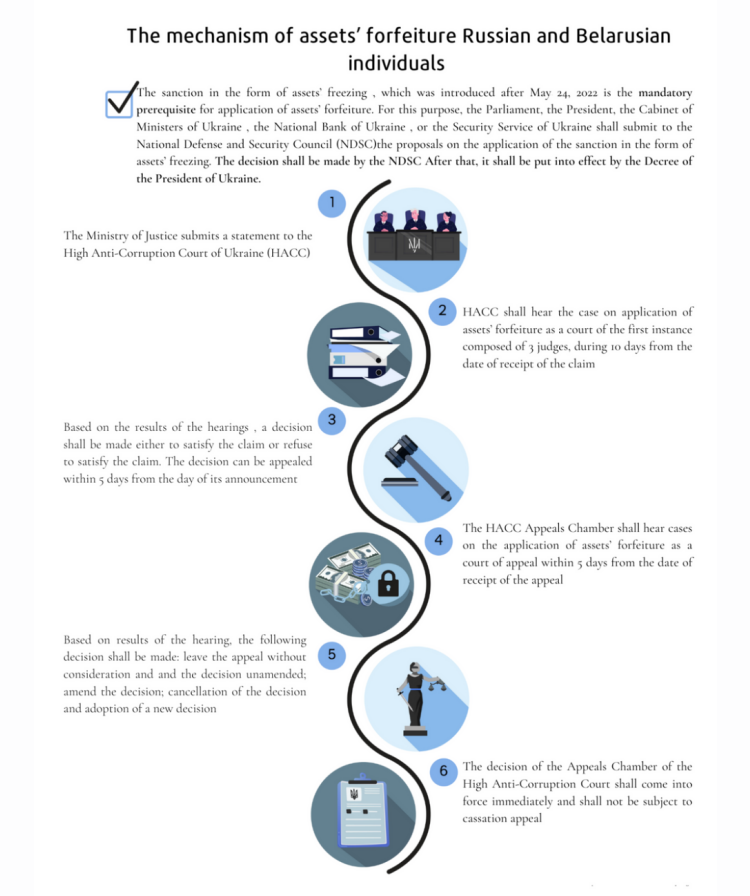
Section ІV

Guarantees to be provided when privat assets of individuals responsible for the aggression are forfeited

Guarantees of appropriate interference with private property rights and the proportionality test
Article 1 of Protocol No. 1 – Right to property
“1. Every natural or legal person is entitled to the peaceful enjoyment of his possessions. No one shall be deprived of his possessions except in the public interest and subject to the conditions provided for by law and by the general principles of international law.
2. The preceding provisions shall not, however, in any way impair the right of a State to enforce such laws as it deems necessary to control the use of property in accordance with the general interest or to secure the payment of taxes or other contributions or penalties.”
Since asset forfeiture means final deprivation of property rights, only part one of the aforementioned article will be applied in this case. Restriction of the right to peaceful possession of property in such cases may be recognized as legitimate if it is: 1) carried out within the public interests; 2) carried out under the conditions provided for by law and in accordance with the general principles of international law.
In addition, in accordance with the case law of the ECtHR, interference with the right to peaceful enjoyment of one’s possessions must strike a “fair balance” between the demands of the general interest of the community and the requirements of the protection of the individual's fundamental rights (Beyeler v. Italy; Alisic and Others v. Bosnia and Herzegovina, Croatia, Serbia, Slovenia, and the Former Yugoslav Republic of Macedonia).
Compliance with these requirements will demonstrate that the principle of proportionality is ensured during the application of forfeiture. Proportionality is a general principle of law that originates from the rule of law and is aimed at maintaining a balance between public and private interests in law-making and law enforcement. It has primarily instrumental value, as it is a kind of method for determining the legality of interference with human rights by the state.
During the consideration of the case on the legality of the application of sanctions in the form of asset freezing, the Grand Chamber of the Supreme Court of Ukraine indicated that establishing the proportionality of the interference with property rights should be subject to judicial control, in accordance with the provisions of the ECHR and the case law of the ECtHR.
Since forfeiture entails even more burdensome consequences of interference with rights than asset blocking, the above becomes even more important.
Therefore, the proposed forfeiture must be a proportionate means of interfering with property rights. This can be determined by proportionality test.
However, since the right in question is the specific conventional right to peaceful enjoyment of one’s possessions as stated in Art. 1 of the First Protocol to the Convention, the proportionality test should not be generic and theoretical, but rather containing criteria adapted to this category of cases by case law of the ECtHR.
According to the ECtHR judgment in Beyeler v. Italy, such interference must comply with certain criteria: 1) observe the principle of lawfulness; 2) pursue a legitimate aim; 3) be proportionate to such an aim.
- Lawfulness
Any interference with the rights protected by Article 1 of Protocol No. 1 to the Convention must meet the requirement of lawfulness (Vistins and Perepjolkins v. Latvia; Belane Nagy v. Hungary)
In general, the principle of lawfulness provides that the implemented provisions of the legislation should be sufficiently accessible, precise, and predictable in their application. Thus, it means the regulatory framework of sanctions in the form of asset forfeiture.
The criteria for determining the entity to which asset forfeiture can be applied should be clearly reflected in the legislation.
It is necessary to minimize and, if possible, eliminate the discretion of the administrative body that will determine such a target in order to avoid selectivity and bias.
Since forfeiture processes can be complicated by limited administrative or other resources, the legislation should contain criteria for the priority of choosing the targeted entity. Given the special goals of forfeiture (stopping aggressive actions and compensation for the damage caused), which will be discussed below in the description of the next condition, proportionality, such criteria can be:
1) the degree of connection of the subject with the political regime of Russia. It is the attack on the assets of persons close to the Putin regime and responsible for waging an aggressive war, as well as the backers of the aggressor, that is, Russian oligarchs who acquired their fortunes through corruption and connections with the authorities, that will have the greatest effect.
2) the value of assets. Persons that own "more expensive assets" should become priority candidates for forfeiture compared to others. The loss of valuable assets can properly influence the subject's behavior.
This approach in the selection of the subject can also be observed in other countries that have implemented or are still in the process of implementing similar forfeiture mechanisms. However, in those countries, this mechanism is defined directly in the law. For example, the US bill proposed confiscation of any property or accounts subject to the jurisdiction of the United States, valued over $2,000,000, and belonging to Russian energy companies or to foreign persons whose wealth is derived in part through corruption linked to or political support for the regime of Russian President Vladimir Putin and with respect to which the President has imposed sanctions.
We recommend using the above criteria in situations where there are several “candidates” for asset forfeiture at the same time, and you need to choose one or more of them first.
The first choice of all the subjects to whom asset forfeiture can be applied should be persons who, on the one hand, have a serious influence on Putin's political regime and are a pillar of the Russian autocracy, and on the other — enrich themselves through corruption and the execution of government orders, in particular defense. This may ensure the decision will not be recognized as biased in case of its appeal.
The conditions and grounds on which asset forfeiture is applied should be provided for in equally clear and unequivocal terms.
The grounds for asset forfeiture must be defined in law. This will significantly strengthen the case for asset forfeiture. Such grounds must be clearly defined and not allow for different interpretations. This will help ensure that the forfeiture will not be successfully challenged in court.
The grounds for confiscation should consist in specific behavior of subjects, including:
- participation in decision-making regarding aggression against Ukraine. The political leadership that started the war and continues it can fall under this criterion;
- direct participation in aggression and commission of war crimes. This can include military leadership which gives orders (e.g., to bomb cities with civilian residents) and military servants who fulfill criminal orders;
- substantial support of, and substantial contribution to the aggression. These are individuals who finance the Russian military machine or Putin's regime, in particular oligarchs, as well as Russian propagandists who shape public opinion, driving support of military actions against Ukraine.
Legislation should provide that in the event of asset forfeiture, the authorized agency must provide specific facts proving that the person has committed such acts (e.g., financed the aggression through participation in defense procurement). This can be done through the use of both public data and confidential information provided by special services (both national and international).
Another point that can be embodied is the reference to the total damage from the Russian aggression, both material losses and human lives, by adding official data of the UN, other international and national authorities, and other circumstances proving the fact of such acts and their consequences. Information about the damage caused by the person's actions, with relevant evidence, will significantly strengthen the position of the authorized body regarding the existence of grounds for asset forfeiture.
- A legitimate aim
Any interference by a public authority with the peaceful enjoyment of possessions can only be justified if it serves a legitimate public (or general) interest (Belane Nagy v. Hungary).
In Art. 1 of Protocol No. 1 to the Convention states that one can only be deprived of property in the public interest. This category has a rather broad interpretation. It is the national authorities that must identify the needs of society and establish what constitutes the public interest, as well as the goals that need to be achieved in the national policy (particularly sanctions policy) through such deprivation of property (asset forfeiture).
Therefore, the authorized body will have to substantiate that asset forfeiture has a legitimate aim. According to the case law of the ECtHR, the legitimate aim of the measure will establish the state's interference with property rights as legitimate. In order to achieve this, the objectives which can be achieved through this measure and their correlation with the public interest must be explained in proceedings. The neglect of this element may become grounds for further appeal of the decision, particularly in the ECtHR.
Since assets will be forfeited for their further use for the benefit of Ukraine, considering the general sanctions theory and confiscation mechanisms at large, the primary goal appears to be compensating for the damage caused to Ukraine and its people at the expense of funds obtained from the forfeiture.
However, in contrast to the freezing and possible forfeiture of Russia's sovereign assets, forfeiture of private assets can achieve another goal, just as important — stop Russia's aggressive actions and terminate support to its current political regime by targeting the financial capabilities of its representatives and the assets of backers and supporters of the regime. Since the forfeiture in question is about private assets, i.e., assets owned by a private individual, this mechanism can indeed influence their behavior. The prospect of losing personal property may become a significant motivator to stop supporting the military aggression and Putin’s regime.
An additional point is the preventive objective of this measure — prevention of further support of Russia’s “military operations” and its violations of international law by establishing specific and inevitable consequences for such actions, namely, loss of private assets. The prospect of losing one's possessions can discourage individuals from conducting or supporting aggression.
Undoubtedly, in the conditions of the ongoing aggressive war against Ukraine, the goals of applying sanctions in the form of asset forfeiture correlate with the interests of society as the only legitimate goal of deprivation of property rights under Art. 1 of Protocol No. 1 to the Convention.
In addition, active forfeiture of private assets and transfer of the obtained funds to Ukraine will reduce economic load on foreign countries which are providing financial aid to Ukraine at the cost of taxpayer money. It seems fairly self-explanatory that it is the aggressor who must pay for the aggression.
- Proportionality to a legitimate aim
An interference [in peaceful enjoyment of one’s property] must strike a “fair balance” between the demands of the general interest of the community and the requirements of the protection of the individual's fundamental rights (Beyeler v. Italy; Alisic and Others v. Bosnia and Herzegovina, Croatia, Serbia, Slovenia and the Former Yugoslav Republic of Macedonia).
Thus, in asset forfeiture, the authorized body must adhere to the principle of balance. That is, the restrictions or losses inflicted upon the person must be weighed against the public benefit that can be achieved through this restriction.
The public benefit of this restriction of rights is determined by the likelihood of achieving its legitimate aim. Here, the important point is determining the amount of assets subject to forfeiture. We recommend a differentiated approach to determining the specific list of assets to be forfeited, and proving, in each specific case, that the forfeiture of exactly this amount of assets, and not less, is necessary to achieve the legitimate purpose of the forfeiture.
The required amount of forfeited assets can be proven by weighing them against the specific grounds for the application of asset forfeiture in each individual case. For example, in the presence of several such grounds at once or due to the severity of the consequences of the act, the amount of assets subject to forfeiture may be larger.
A separate issue of the proportionality of the interference to the legitimate goal is establishing the method and degree of restriction in the exercise of the person’s right.
When determining proportionality, it is ascertained whether the same legitimate aim could have been achieved by less interference with rights and whether the authorities considered the possibility of applying less intrusive measures (OAO Neftyanaya Kompaniya Yukos v. Russia; Vaskrsic v. Slovenia).
In the process of forfeiture, the authorized body must substantiate that the use of forfeiture in particular is the optimum measure which allows for the achievement of the legitimate aim. To accomplish this, it is necessary to prove that the use of less restrictive measures (such as freezing of assets) cannot achieve the necessary purpose and that there is no alternative to asset forfeiture. For example, it can be shown that previously imposed sanctions on a person failed to stop them from committing aggression and war crimes or committing actions that contribute to the aggression.
Taking into account the fact that today, it is impossible to achieve certain goals by other means, in particular to influence the behavior of a person who contributes to aggression, proving the necessity of asset forfeiture should not be problematic
In addition, when determining the proportionality of interference, the individual characteristics of the target of asset forfeiture should be taken into consideration. For example, the ECtHR takes into account the individual's personal vulnerability (the case of Pyrantiene v. Lithuania) and their health and financial situation (Cakarevic v. Croatia).
- Proportionality of limitations of various Convention rights
A separate issue to be investigated in forfeiture proceedings is whether the asset forfeiture (even if found to be proportionate) violates other Convention rights. This entails so-called competing rights.
For instance, the Ukrainian law does not in any way restrict the scope of assets that can be forfeited. The list of such assets is formed and determined by the Ministry of Justice at its own discretion (the discretion of the Ministry of Justice consists in choosing the amount of assets, the country where they are located, etc.). In view of this, there are potentially cases where other Convention rights of such a person will be violated (for example, when a seriously ill person has all their funds and housing confiscated, which deprives them of the right to receive adequate treatment).
Therefore, in each specific case, the authorized body must ensure to establish all the circumstances, ensure the protection and inviolability of fundamental rights and prevent situations in which asset forfeiture will become an excessive burden for a person.
We also recommend carefully investigating potential violation of the rights of third parties as a result of asset forfeiture. For example, this may involve forfeiture of jointly owned property or the confiscation of housing where minors reside.
- Compliance with certain procedural guarantees
A person’s property right is a substantive right; therefore, a country’s decision on restricting this right is also subject to verification of the right to fair trial (BritishAmerican Tobacco Company Ltd v. the Netherlands; Raimondo v. Italy).
In addition to the fact that asset forfeiture as interference with the right to peaceful enjoyment of one’s property must be proportionate, the proceedings must be in line with Art. 6 of the ECHR and the ECtHR case law on justice and publicity of the process.
Observance of the specified guarantees will ensure that procedural rights of individuals are not violated, thus preventing further possible challenging of decisions on this basis.
Peculiarities of forfeiture proceedings (which are likely to be short and take place under a simplified procedure) mean that certain guarantees set forth by Art. 6 of the Convention should be given particular attention in consideration of cases regarding forfeiture of private assets.
These issues should be considered in the light of the concept of “fair hearing” provided for in paragraph 1 of the indicated Article of the Convention. Its essence is that a person should be able to prove their claims and objections to the body, effectively present their legal position on the same terms as those provided to the other party, and also receive a reasoned decision based on the results of the case review. In this way, the right to be heard is realized.
There are three groups of guarantees of the right to be heard: a) guarantees which are the prerequisite of its exercise (due notice); b) guarantees which provide opportunities for exercising this right during proceedings (oral consideration, participation in the hearing, the principle of “equality of arms” and the adversarial principle), and c) guarantees that demonstrate to the person that the decision in the case was made based on the right to be heard (motivated decision of the body). Let us consider these groups in view of consideration of asset forfeiture cases.
a) The first group of guarantees concerns the stage of preparing the case for consideration.
The potential subject of forefeiture must be given due notice about the date and time of consideration. The method of notification should be chosen in a way that leaves no doubt that the authorized body did everything possible to notify the person. Such methods can include a personal delivery of a summons, the use of official mail or a registered letter. There are also other means of communication that can be used, such as a telephone notification, social networks, publication of information on the official website and in the media, etc. In the absence of the subject during the consideration of the case, the authorized body must investigate the fact of his/her proper notification.
In the decision in the case "Shandrov v. Russia" ECtHR noted that the summons to the hearing was sent to the applicant twelve days in advance. The applicant resided 1,600 km away from the court. In such circumstances, even if the applicant had received the letter earlier, it is questionable whether he would have had time to prepare for the case, attend the hearing in person or find a lawyer.
b) The second group of guarantees pertains directly to the consideration of the case.
It is necessary to determine a period of consideration of an asset forfeiture case which would give enough time to carefully study the content of the request made by the authorized body so that the defendant can provide objections and evidence. In each specific case, circumstances which became grounds for missing the established deadlines have to be carefully studied and considered.
It is also necessary to ensure the participation of a person or a representative in the hearing regarding the forfeiture of their assets, especially considering that the process may take place in one country, while the person may be staying or residing in another.
According to the materials of the case "Ponka v. Estonia" the applicant serving his sentence in prison in Finland, while proceedings were opened in an Estonian court. The ECtHR noted that the “hearing” of the applicant's case did not necessarily have to take the form of an oral hearing in a courtroom in Estonia. However, the domestic court did not consider other alternative procedural options (such as the use of modern communications technology) with a view to ensuring the applicant’s right to be heard orally. The above considerations were sufficient for the Court to conclude that there had been a violation of the applicant’s right to an oral hearing under Article 6 § 1 of the Convention.
In view of the above, it is important to ensure the opportunity of participation in the trial using video conferencing tools.
Special attention should also be given to the publicity of the forfeiture proceedings. Forfeiture of private assets is an exceptional measure, largely unprecedented in the domestic and global practice. Naturally, public attention to this process will be very high. This is also due to the fact that private individuals’ assets may be located in different countries. Therefore, it is to be expected that these countries will be particularly interested in the details of the forfeiture process. It will also have an impact on the assistance of these states in the implementation of decisions on asset forfeiture.
In this regard, we recommend ensuring the highest possible level of publicity and openness of the forfeiture process. Civil society should have full access to all actions of the authorized body. Everyone interested should have an opportunity to find out about prospective “candidates” for asset forfeiture, facts, evidence, and grounds for the application of this measure, as well as the list of assets that may be subject to forfeiture.
c) The third group of guarantees concerns the motivation of the decision on forfeiture.
Substantiation of the decision as a component of the guarantee to be heard is an important requirement stipulating the legitimacy of the decision and trust in the process. Every decision made as a result of an asset forfeiture case must take into account, in particular, the assessment of the objections of the person whose assets are subject to forfeiture, as well as the evidence provided by them. Study of all the evidence and reasoning provided by the parties, answers to all the questions raised during case consideration will prevent a potentially successful challenging of the decision on this basis. The decision must be legal and justified, based on the principles of the rule of law.
Conсlusion

Findings and recommendations

The conducted research shows that forfeiture of private assets may become a new effective mechanism capable to influence the behavior of individuals who are personally responsible for political decisions about the aggression, for waging and supporting the war of aggression against Ukraine.
Despite more than eight years of sanctions pressure, the previously taken measures failed to prevent a full-scale Russian invasion of Ukraine. A number of the richest and most influential representatives of the aggressor country not only preserved their wealth, but also increased it during this time.
In just eight months of the war on the territory of Ukraine, losses from aggression reached more than USD 750 billion. The economic burden of restoring Ukraine currently falls on the taxpayers of Ukraine itself and its international partners, because there are no effective international mechanisms to bring both Russia and those responsible for the aggression to financial responsibility. This legal gap creates a feeling of impunity for the catastrophic consequences of the decisions made and indicates a failure to observe the basic principle of responsibility for one's actions.
Currently, only Ukraine and Canada have passed legislation on the forfeiture of private assets. The Ukrainian court has already issued the first decision to forfeit the assets of a Russian oligarch — a weapons manufacturer. This practice can serve as a model for other countries, which should intensify efforts towards the development of the appropriate legal framework and establishing the possibility of forfeiting the assets of persons responsible for the aggression.
Taking into account the material component of this measure, its application can be carried out outside criminal proceedings, according to a simplified procedure within the framework of civil proceedings. This will make the forfeiture effective and will enable it to achieve its goals in a legal manner under proper judicial control.
This mechanism is a considerable, irreversible measure of influence. Therefore, it is mandatory to observe the rules of proper intervention in the right of private property, which will make this confiscation a lawful and legitimate means. To achieve this, we recommend adhering to the principle of proportionality, which is interpreted in the practice of the ECtHR, in particular, through:
- compliance with the principle of lawfulness:
- the applied norms must be sufficiently accessible, precise, and predictable;
- there have to be clear criteria for selection of the subject to whom asset forfeiture can be applied (e.g., the degree of connection of the subject with the political regime of Russia and the value of assets);
- it is necessary to minimize and, if possible, eliminate the discretionary powers of the responsible administrative body to identify such a subject in order to avoid selectivity and bias;
- there have to be clear, unequivocal grounds for the use of asset forfeiture;
- justification of a legitimate aim of asset forfeiture during the process
The objectives that can be achieved through this restriction have to be justified, and effective use of assets forfeited through this measure and their correlation with the public interest must be explained in proceedings;
- observance of the principle of balance, i.e., forfeiture can only be used when it is
impossible to achieve the necessary goals by less burdensome measures. In addition, when determining the proportionality of interference, the individual characteristics of the target of asset forfeiture should be taken into consideration.
In addition to the fact that asset forfeiture as interference in the right to peaceful enjoyment of one’s property must be proportionate, the proceedings must be in line with Art. 6 of the ECHR and the ECtHR case law on justice and publicity of the process. To this end, we recommend paying special attention to ensuring the right to be heard in forfeiture proceedings.
It is also important that the process should be open, accessible to the public, and that actions at every stage of forfeiture should be made public, which additionally legitimizes this measure.
The introduction of forfeiture measures and the provision of the necessary guarantees can become a deterrent mechanism capable of preventing further wars due to the inevitability of at least material responsibility for the consequences of decisions made.







